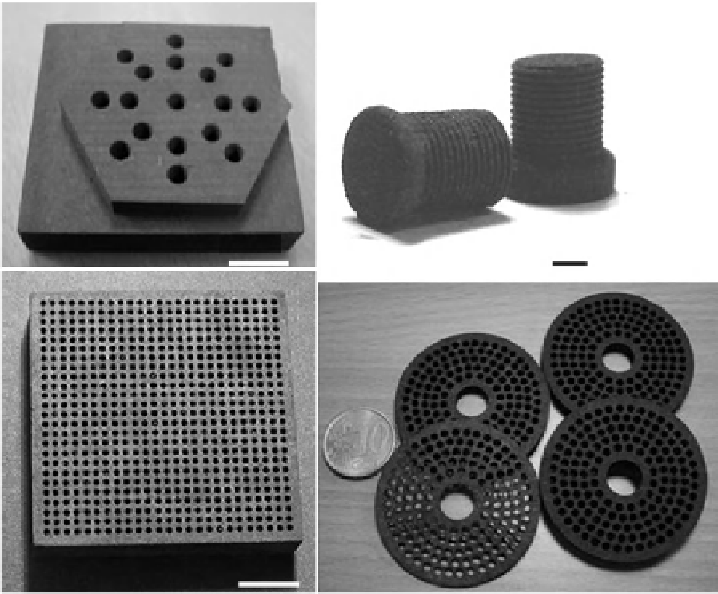Biomedical Engineering Reference
In-Depth Information
1 cm
2
mm
1 cm
Figure 11.8.
Complex shapes in bioSiC fabricated from different wood precursors.
differ within the same specifi c species [Panshin, 1980]. Woods can be classifi ed
into hardwoods (angiosperms) and softwoods (gymnosperms) based upon
whether the trees produce covered or uncovered seeds. As shown in Figure 11.2,
the microstructures of hardwoods and softwoods can also be used to distinguish
the two groups due to the presence or absence of certain cell types. Hardwoods
contain four types of cells: fi ber cells, which serve as mechanical support, and rays,
sap channels (tracheae), and long tubular cells, which serve to transport and store
food. On the other hand, softwoods are comprised almost completely of long
tubular cells (tracheids). Growth rings are formed due to the changing growth
rate of the wood through different seasons in a year. The repeated transition from
early wood, which is composed of larger pores, to latewood, which is composed of
smaller pores, results in the distinct rings visible on the macroscopic scale. By
convention, the axial direction runs parallel to the elongated pores, the radial
direction is perpendicular and crosses the growth rings at right angles, and the
tangential direction is orthogonal to the axial and radial directions. A further clas-
sifi cation of hardwood microstructures divides them into two classes. Woods with
a uniform distribution of cells are called diffuse-porous woods (poplar, beech,
and so on), and woods with a bimodal distribution of cells are called ring-porous
woods (sapele, red oak, mahogany, eucalyptus and so on).

Search WWH ::

Custom Search